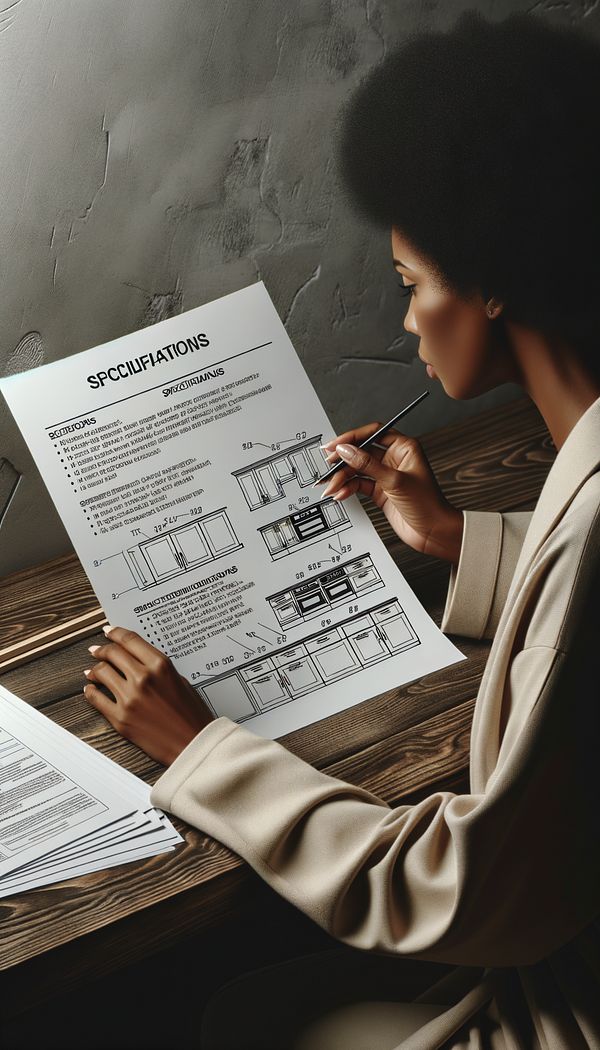What is Specifications?
Specifications are detailed descriptions and guidelines for the execution and completion of design elements within a project.
Description
In the realm of interior design, specifications refer to the comprehensive written documents that detail every aspect of a project. These documents are crucial as they provide clear instructions and descriptions for the materials, finishes, sizes, and quality standards expected for each element of the design. Specifications are often accompanied by drawings or plans that visually represent the project, but they go further by defining the technical aspects that drawings cannot fully convey.
Specifications serve several key purposes. They ensure consistency and clarity in understanding the project requirements among all parties involved, including clients, designers, contractors, and suppliers. By laying out the expectations clearly, specifications help to minimize misunderstandings and errors during the construction or renovation process. They also provide a basis for costing and procurement, as they allow contractors to accurately estimate the materials and labor required for the project. Additionally, specifications can serve as a legal document that all parties can refer to in case of disputes regarding the quality or execution of the work.
Usage
Specifications are commonly used in large-scale interior design projects such as corporate offices, hotels, and residential complexes. For example, an interior designer might produce a set of specifications detailing the type of wood, finish, and dimensions for custom cabinetry in a kitchen remodel. In a commercial setting, specifications might outline the acoustic properties and fire resistance ratings required for ceiling materials.
FAQs
-
Are specifications necessary for all interior design projects?
While not all interior design projects require detailed specifications, they are highly recommended for larger or more complex projects to ensure precision and alignment among all stakeholders.
-
Who is responsible for creating specifications in an interior design project?
Typically, the interior designer or the design team is responsible for creating the specifications. In some cases, specialized consultants may be involved in drafting specifications for specific aspects of the project, such as lighting or acoustics.
-
How do specifications differ from drawings or plans?
Drawings or plans primarily provide a visual representation of the design concept, focusing on spatial arrangements, aesthetics, and dimensions. In contrast, specifications offer detailed written information about the technical requirements, materials, and standards that drawings cannot fully convey.
-
Can specifications be modified after they are completed?
Yes, specifications can be modified if necessary; however, any changes should be clearly documented and agreed upon by all relevant parties to prevent confusion and maintain project integrity.
-
Are specifications legally binding?
Specifications can serve as a legal document in a project, especially in defining the quality and standards of work expected. They can be used as a reference in legal disputes related to the execution of the project.
Practical Application
When drafting specifications for an interior design project, it's vital to be as clear and thorough as possible. Incorporate precise descriptions, product codes, manufacturer details, and any specific standards or certifications required for materials and finishes. Collaborating closely with clients, contractors, and suppliers during the specification process can ensure that the final document reflects the project's needs accurately.
-
Design Styles478 articles
-
Furniture Types599 articles
-
Technical Terms38 articles
-
Materials & Textiles360 articles
-
Construction & Building86 articles
-
TransparencyTransparency in interior design refers to the quality of materials that allows light to pass through them, creating a sense of openness and fluidity.
-
VarguenoA vargueno is a type of portable desk with compartments and drawers.
-
Kneehole DeskA kneehole desk is a desk featuring a central recess that provides space for the user's legs.
-
ChesserA chesser is a piece of furniture that combines elements of a chest of drawers and a dresser.
-
Contractor, GeneralA general contractor is a primary professional responsible for the day-to-day oversight of a construction project.
